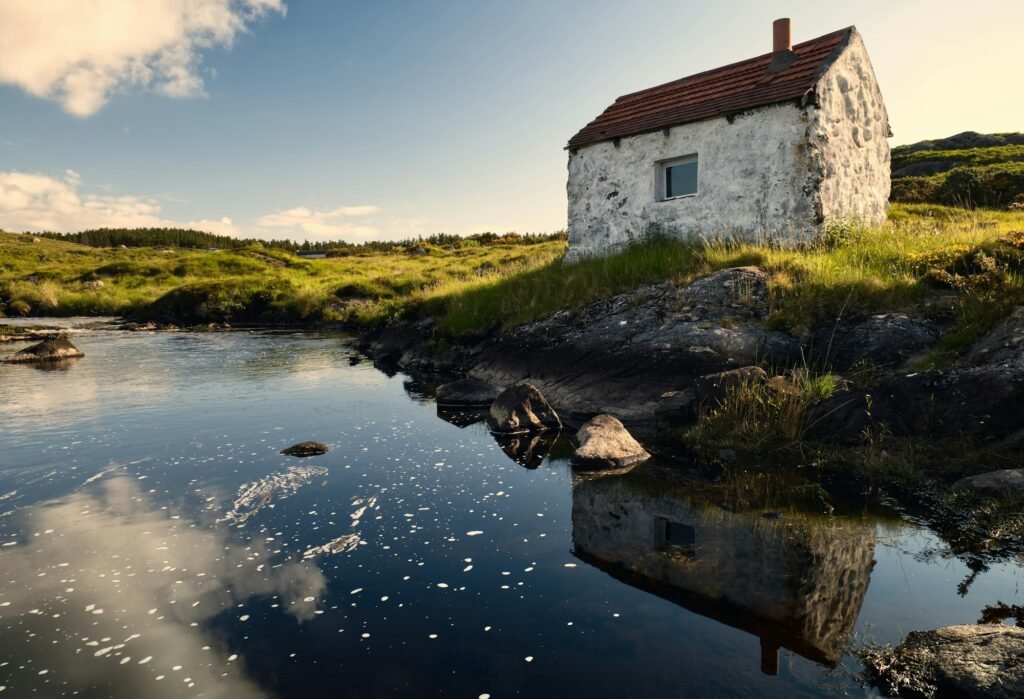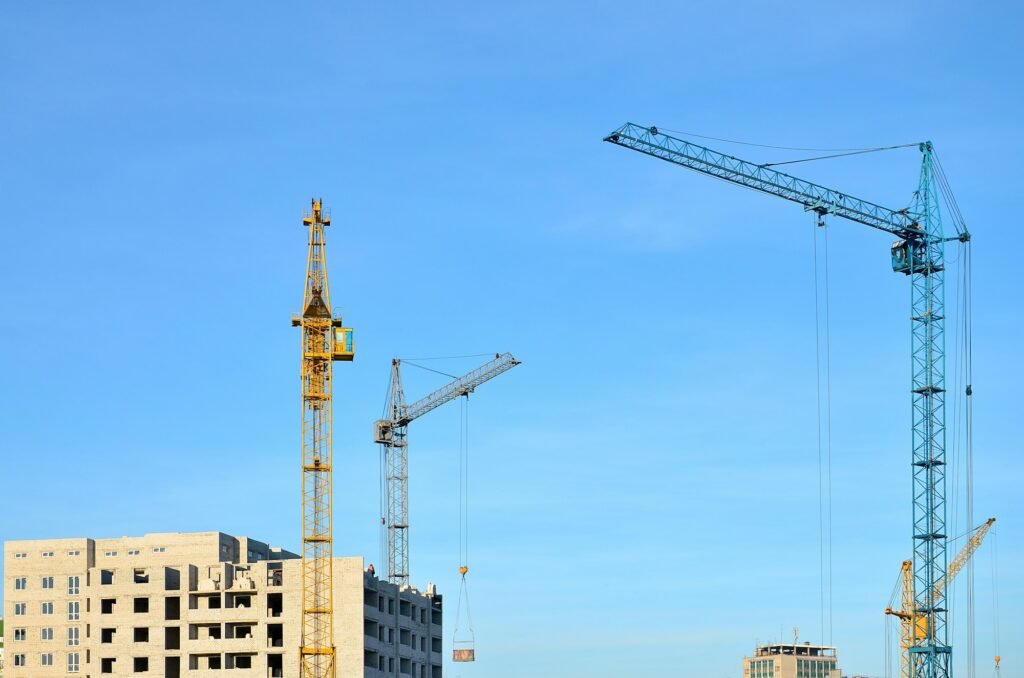Should I Buy or Build a Home in Ireland?

Buy vs Build – Weighing Your Options
The decision to buy or build a home in Ireland involves a myriad of considerations, each influencing the final choice in significant ways. Prospective homeowners often find themselves at a crossroads, weighing financial aspects, personal preferences, and long-term goals to decide which path to take. Understanding these factors and how they interplay is crucial for making an informed decision.
Financial considerations are perhaps the most prominent influencers. The initial costs, including deposits for buying a property and construction costs for building, play a pivotal role. Mortgage availability, interest rates, and potential government incentives also add layers of financial complexity. Prospective buyers need to scrutinize their budget and forecasts to determine which option aligns best with their economic capacity and future plans.
Personal preferences also carry substantial weight. Some may relish the idea of designing their dream home from scratch, tailoring every detail to their taste and lifestyle. Others might prioritize the convenience of moving into a pre-built house, possibly in a well-established neighborhood with immediate access to amenities and services. The emotional appeal of building versus buying can significantly affect one’s choice.
Long-term goals, including future family plans, career prospects, and potential relocations, must also be considered. The flexibility of owning a pre-built home might suit individuals with uncertain future plans, whereas constructing a custom home may cater to those with a clear, long-term vision of settling down.
The current housing market trends in Ireland further complicate this decision. With property prices and availability fluctuating and a rising demand for homes, understanding the market is essential. In recent years, economic growth and urbanization have driven up property prices, making it a seller’s market. However, regions vary, and rural areas might offer more land for building with potentially lower costs compared to urban centers.
By comprehensively analyzing these factors, individuals can develop a clearer perspective on whether buying or building a home in Ireland best meets their personal and financial circumstances.
Ideal Locations for Your New Home in Ireland
When considering whether to buy or build a home in Ireland, one pivotal factor to consider is the location. Ireland offers a plethora of options, ranging from bustling urban centers to tranquil rural landscapes. Choosing the right setting can significantly impact your lifestyle, and it is vital to weigh the pros and cons of both urban and rural living.
Urban locations such as Dublin, Cork, and Galway are renowned for their dynamic atmospheres and diverse cultural offerings. Dublin, the nation’s capital, is the hub of Ireland’s economic, political, and cultural life. The city boasts a wealth of job opportunities, particularly in the tech, finance, and tourism sectors. Additionally, Dublin offers extensive transportation networks, including an international airport, making travel convenient. On the downside, property prices in Dublin can be steep, and the city’s fast-paced lifestyle may not suit everyone.
Cork, Ireland’s second-largest city, is another excellent urban option. Known for its vibrant cultural scene and strong sense of community, Cork is slightly less expensive than Dublin while still offering substantial amenities, good job prospects, and a variety of educational institutions. Similarly, Galway, often dubbed the “cultural heart” of Ireland, combines a rich artistic tradition with a booming tech industry. Galway’s coastal location also provides delightful natural beauty and outdoor recreational activities.
In contrast, rural areas such as County Kerry or Donegal offer a more peaceful and scenic lifestyle. County Kerry, with its picturesque landscapes and close-knit communities, is perfect for those seeking tranquility and a closer connection to nature. Donegal is similarly appealing with its rugged coastlines and affordability. Rural settings provide the benefit of lower property costs, but they do come with trade-offs, such as fewer job opportunities and limited access to amenities like specialized healthcare and extensive public transportation networks.
When deciding on a location, it is crucial to consider factors such as local amenities, transportation, job opportunities, community atmosphere, and proximity to nature. Each region in Ireland has its unique charm and advantages, catering to diverse lifestyle preferences. By thoroughly evaluating these elements, you can identify the ideal location that aligns with your goals and desires for your new home in Ireland.
Process and Considerations for Building a Home in Ireland
Building a home in Ireland involves several key steps, starting with purchasing a suitable plot of land. Prospective homeowners should conduct thorough research to find a location that meets their needs and budget. Once the land is acquired, obtaining the necessary permits is crucial. This can include planning permission and building regulations approval, which ensure that the construction aligns with local standards and zoning laws.
Engaging a team of qualified professionals is essential for a successful build. This often involves hiring an architect to design the home, a surveyor to assess the land, and contractors to manage the construction process. It’s important to verify the credentials and experience of these professionals to avoid potential issues. The average timeline for completing a new home in Ireland can range from 12 to 24 months, depending on various factors such as project complexity, weather conditions, and availability of materials and labor.
Potential obstacles include unexpected ground conditions that may require additional work, delays in obtaining permits, and fluctuating material costs. Hence, having a contingency budget is advisable. Commonly used materials in Irish home construction include concrete blocks, timber frames, and insulation materials like extruded polystyrene for energy efficiency. Incorporating sustainable practices, such as installing solar panels and using recycled materials, is increasingly important and can result in long-term savings as well as environmental benefits.
Understanding the local building regulations and codes is critical to avoid legal complications and to ensure safety and quality standards are met. Consulting the regulatory bodies like the National Building Control Office can provide valuable guidance throughout the construction process. By thoroughly planning and considering these factors, potential homeowners can decide if building a home in Ireland aligns with their goals and resources.
Cost Analysis: The Least Expensive Ways to Build a Home in Ireland
When considering building a home in Ireland, understanding the detailed costs involved and strategies to minimize these expenses is crucial. The cost analysis begins with land acquisition, which varies significantly depending on the location. On average, rural plots tend to be more affordable, ranging from €10,000 to €50,000, while urban land prices can soar upwards of €200,000 or more. Thus, opting for a rural location can significantly reduce initial expenses.
Construction materials and labor are the next substantial costs. Concrete blocks, timber frames, and prefabricated panels are common material choices. Timber frames and prefabricated homes often present cost-effective alternatives without compromising quality. Typically, self-building a timber frame house can range from €100,000 to €200,000, while using traditional masonry might exceed this range. Employing local labor and leveraging local supply chains can further reduce transportation and logistic costs, adding to the savings.
Labor expenses can be substantial, constituting a significant portion of the construction budget. Engaging local contractors and laborers can bring down costs due to reduced travel and accommodation needs. Moreover, investing time in careful project management and sourcing multiple quotes for all services can also substantially lower overall expenses. Additionally, modular and prefabricated homes can speed up construction timelines, effectively reducing labor costs and other incidental expenses. For example, one company offers their standard modular offering in 3 months, yet it can take over a year for a builder to build a 2 bedroom home.
Energy-efficient building designs not only contribute to long-term energy savings but can also reduce initial construction costs. Simple, compact home designs minimize material use and labor requirements. For instance, opting for a rectangular footprint over elaborate architectural features can save both time and money during construction. Utilizing sustainable materials readily available in Ireland can further enhance cost-effectiveness.
To offer a clear financial overview, let’s compare building versus buying. While the average cost of buying a new home in Ireland hovers around €250,000 to €450,000, self-building, with cost-effective strategies, can start at approximately €150,000. Despite the allure of buying, building your home provides an opportunity for tailored design choices and potentially lower costs.
Equipped with these insights, you are now better prepared to decide whether building a home in Ireland aligns with your financial goals.




